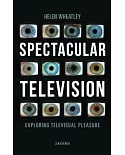Frequently it is suggested that the 'golden age' of television was during the period 1950-1960. It is true that television almost ruined Hollywood's fortunes during this period. But if this was
the authentic golden age, then it was an age of black and white, somewhat limited creativity, poor reception, lack of competition (except in the United States) and - by and large - public
service broadcasting.However, if we take 1950 as a generic 'starting point' for modern television broadcasting, then we talk about a kind of prehistoric stage of the medium - in which it
remained for the best part of three decades. The younger days of broadcasting were the 1980s; the time when commercial television started on a large scale and, in this youth, was getting
younger in terms of programming.Luxembourg-based SES Astra appeared on the scene at exactly this time. Astra was instrumental in the dramatic developments in television that we have witnessed
since then.This is the story we want to tell in this book. Without satellite technology and the success of satellite reception, without the resulting mass-market penetration of television sets
and general economic prosperity we would not have the necessary base ingredients to make the great leap forward into digital, into HDTV, 3D-television, and the prospects of Ultra High
Definition now in sight.





















